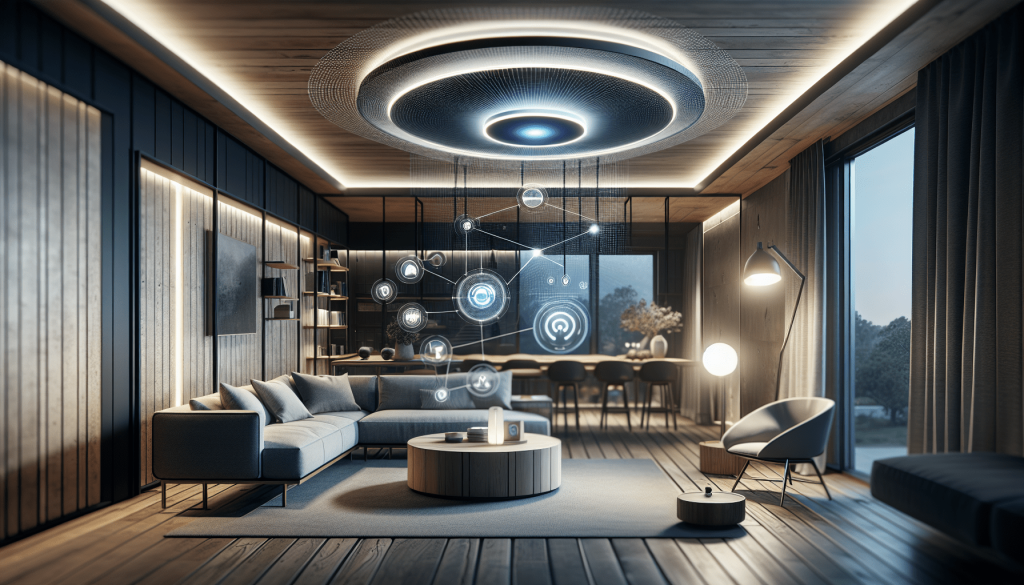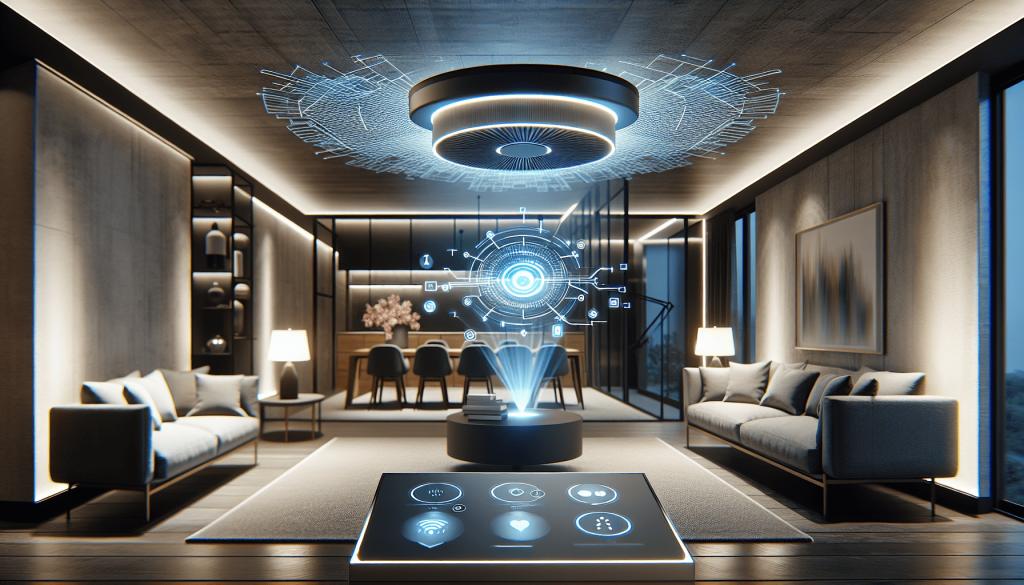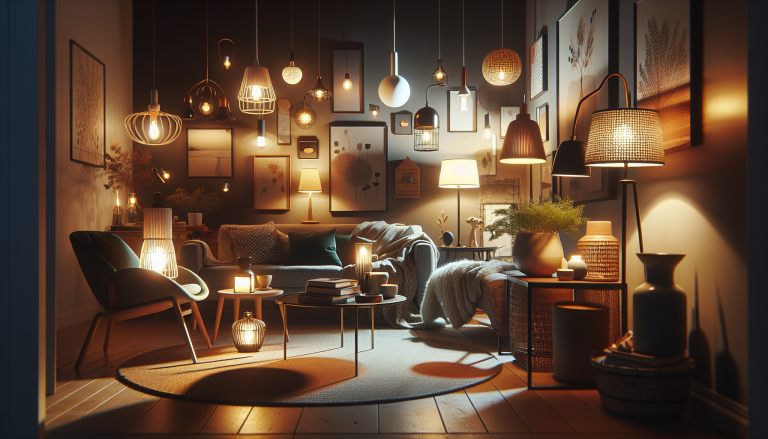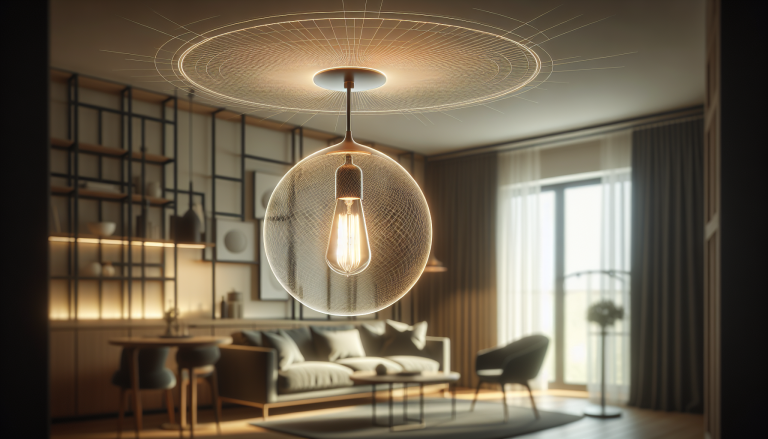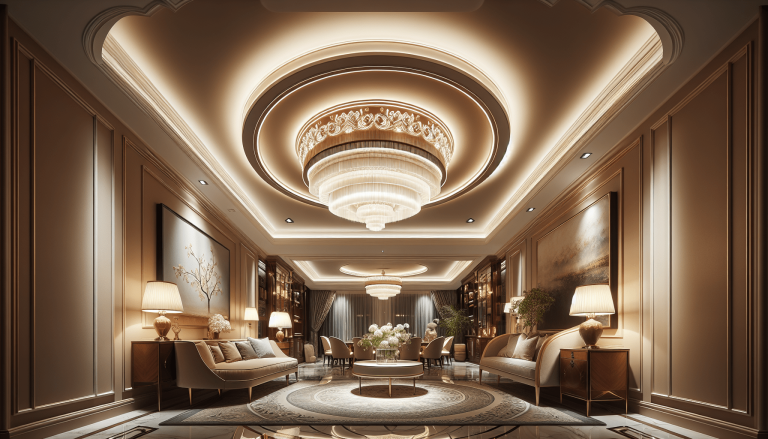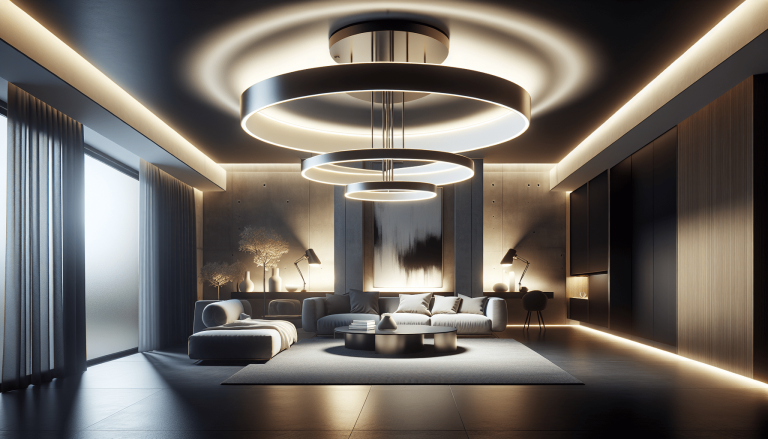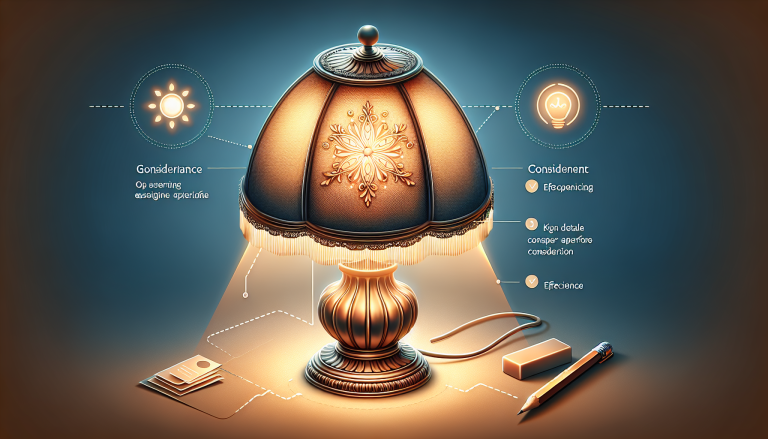Have you ever dreamed of controlling the lighting in your home with just a simple voice command or a tap on your phone? Well, your dreams are now a reality with the incorporation of smart technology into your ceiling lights. Gone are the days of fumbling in the dark for a light switch or wasting electricity by leaving lights on when you’re not in the room. With smart technology, you can effortlessly adjust the brightness, color, and even schedule the lighting in your home, all from the palm of your hand. Get ready to experience a new level of convenience and ambiance as we show you how to incorporate smart technology into your ceiling lights.
Table of Contents
Toggle1. Choose the right smart lighting system
When it comes to incorporating smart technology into your ceiling lights, the first step is to choose the right smart lighting system for your needs and preferences. There are several factors to consider during this process.
Firstly, it’s important to research and explore different smart lighting systems available in the market. Take your time to understand the features and functionalities of each system and determine which ones align with your requirements. For example, some smart lighting systems offer color-changing capabilities while others focus more on dimming features.
Compatibility with your existing devices is another crucial aspect to consider. Make sure that the smart lighting system you choose works seamlessly with your current devices such as smartphones or voice assistants. This way, you can effortlessly control your ceiling lights through your preferred devices.
Additionally, it’s important to take into account the features and functionalities offered by the smart lighting system. Some systems may have advanced automation options, allowing you to create personalized lighting scenes and schedules. Others may have built-in motion sensors or support voice control. Consider which features are important to you and prioritize those when choosing a smart lighting system.
2. Determine the type of smart ceiling lights
Once you have chosen the right smart lighting system, it’s time to determine the type of smart ceiling lights that will suit your space. There are primarily two options to choose from: smart bulbs and smart fixtures.
Smart bulbs are an excellent choice if you want to transform your existing light fixtures into smart lights. They can be easily screwed into your existing fixtures, offering a quick and hassle-free setup. On the other hand, smart fixtures come with built-in smart technology and are a more permanent solution.
Consider the type of lighting you want to achieve in your space. Smart bulbs usually offer options for adjustable brightness, color temperature, and even color-changing capabilities. If you prefer these customizable lighting options, opting for smart bulbs would be a suitable choice. On the other hand, if you are looking for a more fixed lighting solution, smart fixtures may be a better fit.
It’s also crucial to evaluate the installation requirements of the ceiling lights you choose. Smart bulbs are generally easy to install and require minimal technical knowledge. However, smart fixtures may require professional installation due to their wiring and setup. Take this into account when making your decision.
3. Prepare your ceiling lights for smart technology
Before you can enjoy the benefits of smart technology in your ceiling lights, there are a few preparations you need to make. Ensuring a stable Wi-Fi network is essential for the proper functioning of your smart lighting system. Make sure your Wi-Fi coverage reaches the areas where your ceiling lights are installed to avoid any connectivity issues.
Installing the necessary smart home hub or bridge is another crucial step. Depending on the smart lighting system you have chosen, you may need to connect your ceiling lights to a central hub or bridge that acts as a communication gateway between your lights and your devices. Follow the manufacturer’s instructions to set up the hub or bridge correctly.
Additionally, check if you need any additional accessories or adapters to seamlessly integrate your ceiling lights with the smart technology. For example, some smart bulbs may require a specific type of light fixture that supports their features, or you may need adapters for compatibility with certain smart home systems. Make sure you have all the necessary components for a smooth installation process.
4. Connect your smart ceiling lights to a smart home ecosystem
Once you have prepared your ceiling lights for smart technology, the next step is to connect them to a smart home ecosystem. There are various smart home platforms and assistants available in the market, so it’s essential to choose one that is compatible with your smart lighting system.
Before connecting your ceiling lights, download the corresponding mobile app for your selected smart home platform. This app will act as the control center, allowing you to manage and customize your smart lighting system.
Once you have the app installed, follow the instructions provided by the manufacturer to connect your ceiling lights to the smart home system. This may involve linking your smart lighting system with your smart home hub or bridge, or directly connecting the lights to your Wi-Fi network. The app will guide you through the process, making it as user-friendly as possible.
5. Set up and configure your smart lighting system
After connecting your smart ceiling lights to the smart home ecosystem, it’s time to set up and configure your system to meet your specific preferences.
Follow the manufacturer’s instructions to ensure the correct installation of your smart lighting system. This may involve placing and securing the smart bulbs or fixtures in their designated positions. Make sure to follow any safety precautions outlined in the instructions.
Once your ceiling lights are installed, use the mobile app to create personalized lighting scenes and schedules. These scenes allow you to adjust the brightness, color temperature, and even the colors of your lights to suit different moods and occasions. For example, you can create a relaxing scene with warm and dimmed lighting for winding down in the evening.
Take advantage of the flexibility of your smart lighting system by exploring advanced automation options. Some systems allow you to program your lights to turn on or off at specific times or in response to certain events, such as when you enter or leave the room. This can enhance convenience and energy efficiency in your home.
6. Explore additional features and integrations
Once your smart lighting system is up and running, it’s time to explore the additional features and integrations it offers.
Experiment with voice control by integrating your smart lighting system with a voice assistant such as Amazon Alexa or Google Assistant. This allows you to control your ceiling lights using voice commands, adding an extra layer of convenience to your smart home setup.
Utilize motion sensors and presence detection to enhance the functionality of your smart lighting system. Motion sensors can automatically turn on the lights when someone enters the room and turn them off when the room is vacant. This not only saves energy but also reduces the hassle of manually controlling the lights.
Integrate your smart lighting system with other smart devices and systems in your home. For example, you can synchronize your lights with your smart thermostat to create a cohesive home automation experience. The possibilities are endless when it comes to integrating different smart devices and systems, so feel free to explore and personalize your setup according to your needs.
7. Customize and personalize your smart ceiling lights
One of the exciting aspects of incorporating smart technology into your ceiling lights is the ability to customize and personalize your lighting experience.
Change the colors and effects of your smart ceiling lights according to your mood or preference. Whether you want a vibrant and energizing atmosphere or a calming and serene ambiance, your smart lighting system allows you to easily adjust the colors to suit your liking. Get creative and play with different combinations to create the perfect lighting for any occasion.
Sync your lighting effects with music or movies to enhance your audiovisual experiences. Some smart lighting systems offer synchronization options that allow your lights to react to the rhythm or scenes of the media you are enjoying. Whether it’s a dance party or a movie night, this feature adds an extra level of immersion to your entertainment endeavors.
Set up geolocation triggers for automated lighting control. With geolocation technology, you can program your smart lighting system to turn on or off based on your location. For example, you can set your lights to turn on automatically when you’re nearing home, ensuring a warm and welcoming environment upon your arrival.
8. Ensure proper maintenance and updates
To keep your smart ceiling lights in optimal condition, it’s important to ensure proper maintenance and regular updates.
Replace bulbs or fixtures when needed to ensure that your lights continue to function properly. Over time, bulbs may lose their brightness or fixtures may wear out. Keep an eye on the performance of your ceiling lights and replace any components as necessary.
Keep the smart lighting system firmware up to date. Manufacturers often release updates to improve performance, fix bugs, and introduce new features. Check for updates regularly within the mobile app or follow the manufacturer’s instructions to keep your smart lighting system up to date.
Troubleshoot common issues that may arise with your smart lighting system. This could include connectivity problems, unresponsive lights, or unexpected behavior. Consult the manufacturer’s troubleshooting guide or contact customer support for assistance. Regular maintenance and troubleshooting can help ensure that your smart lighting system operates smoothly.
9. Enhance security and safety with smart lighting
Smart lighting can play a significant role in enhancing the security and safety of your home.
Utilize smart lighting as a deterrent for burglars. With the ability to program your lights to turn on or off at specific times, you can create the illusion of an occupied home even when you’re away. This helps to deter potential intruders and increases the security of your property.
Set up automated lighting when you’re away. If you’re planning a vacation or a business trip, you can program your smart lighting system to mimic your usual lighting patterns to give the impression that someone is home. This adds an extra layer of security and peace of mind while you’re away.
Integrate your smart lighting system with security and monitoring systems. This allows your lights to respond to security alerts, such as turning on in the event of a break-in or automatically illuminating dark areas when motion is detected. Integrating your smart lighting system with other security devices creates a comprehensive security solution for your home.
10. Consider energy efficiency and cost savings
Incorporating smart technology into your ceiling lights can also contribute to energy efficiency and cost savings in the long run.
Optimize energy usage with smart lighting features such as dimming and scheduling. With the ability to adjust brightness levels, you can reduce energy consumption by using only the amount of light you need. Scheduling your lights to turn off when not in use or dimming them during certain times of the day can further reduce energy waste.
Explore energy-saving settings and schedules within your smart lighting system. Some systems offer pre-set energy-saving modes or suggestions to help you minimize your energy usage. Take advantage of these features to save on your electricity bills while still enjoying the benefits of smart lighting.
Track and analyze your energy consumption using the data provided by your smart lighting system. This allows you to gain insights into your usage patterns and identify areas where you can further optimize your energy consumption. By monitoring your energy usage, you can make informed decisions about your lighting habits and identify potential areas for improvement.
Incorporating smart technology into your ceiling lights brings numerous benefits, from convenience and personalization to energy efficiency and enhanced security. By following these steps and exploring the possibilities that smart lighting systems offer, you can transform your home lighting experience and create the perfect ambiance for every moment.

